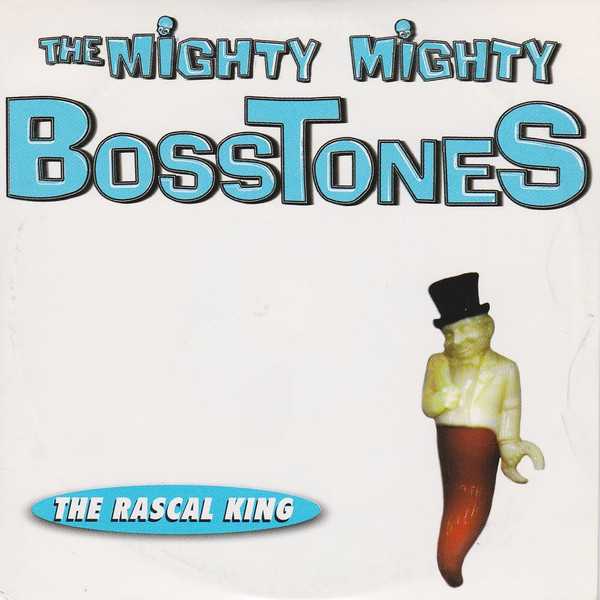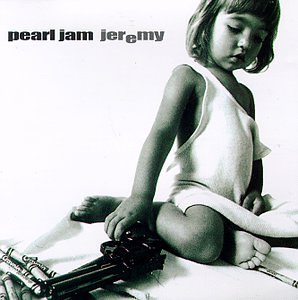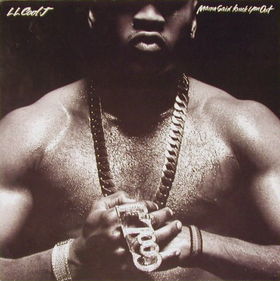 “Crash Into Me” by Dave Matthews Band stands as one of the most enigmatic and evocative songs of the 1990s—a hypnotic, emotionally complex ballad that has endured decades beyond its original release. Released in December 1996 as the third single from the group’s second studio album Crash, the song has since become synonymous with the band’s identity, a hauntingly seductive expression of yearning wrapped in intricate acoustic instrumentation and poetic lyricism. At once delicate and powerful, “Crash Into Me” is a rare example of a song that simultaneously invites romantic interpretation while also unsettling the listener with its voyeuristic undertones. The tension between those dualities is what makes the song timeless, controversial, and unforgettable.
“Crash Into Me” by Dave Matthews Band stands as one of the most enigmatic and evocative songs of the 1990s—a hypnotic, emotionally complex ballad that has endured decades beyond its original release. Released in December 1996 as the third single from the group’s second studio album Crash, the song has since become synonymous with the band’s identity, a hauntingly seductive expression of yearning wrapped in intricate acoustic instrumentation and poetic lyricism. At once delicate and powerful, “Crash Into Me” is a rare example of a song that simultaneously invites romantic interpretation while also unsettling the listener with its voyeuristic undertones. The tension between those dualities is what makes the song timeless, controversial, and unforgettable.
The Dave Matthews Band had already begun to establish themselves as a musical force by the time Crash arrived. With a lineup that included Dave Matthews (vocals, guitar), Carter Beauford (drums), Stefan Lessard (bass), Boyd Tinsley (violin), and LeRoi Moore (saxophone), the band had quickly earned a reputation for fusing rock, jazz, folk, and jam band sensibilities into a sound that defied easy categorization. Their live shows became legendary, drawing fans who appreciated the group’s improvisational talent and emotional intensity. But with “Crash Into Me,” Matthews and his bandmates distilled all of their musical ambition into one singular, compelling track—a slow-burning ballad that captured something primal and poetic about desire.
Musically, “Crash Into Me” is built around a loping, rhythmically complex guitar riff in a 6/8 time signature. Matthews has always had a distinctive way of playing acoustic guitar, and his rhythmic strumming and open tunings lend the song an almost dreamlike quality. The rest of the band subtly fills in around this skeleton—Beauford’s drums shuffle and swing in a jazzy undertone, Lessard’s bass glides gracefully, and Moore’s saxophone adds a soft texture that feels both sensual and sorrowful. Tinsley’s violin threads in a mournful counterpoint, and the result is a sonic atmosphere that’s both intimate and expansive, restrained yet teeming with emotion.
But it’s the lyrics of “Crash Into Me” that have sparked the most fascination—and controversy. On the surface, the song appears to be a tender love ballad. Lines like “Touch your lips just so I know / In your eyes, love, it glows so” give the impression of a poetic, almost spiritual adoration. But as the song progresses, the perspective becomes more ambiguous and darker. Matthews sings from the point of view of a narrator who is clearly not physically close to the object of his desire, suggesting a kind of emotional or even physical distance. The line “I watch you there through the window and I stare at you” immediately introduces an element of voyeurism that complicates any straightforward romantic interpretation. Is the narrator a lover, or is he merely fantasizing from afar?
Dave Matthews himself has spoken about the song’s themes, acknowledging that it was written from the perspective of a man who is watching a woman through her bedroom window. In interviews, he’s explained that he intended to capture the raw, unfiltered essence of longing and fantasy, but also the inherent creepiness in unchecked desire. That nuance is essential to understanding “Crash Into Me”—it’s not a love song in the traditional sense, but a study in obsession and the uncomfortable spaces between love, lust, and fantasy. The ambiguity in the narrator’s perspective—at once reverent and invasive—makes the song deeply human, even as it treads into unsettling emotional terrain.
This complexity has led to a range of interpretations over the years. Some listeners hear “Crash Into Me” as a celebration of romantic vulnerability, a song about surrendering oneself to love and passion. Others find it disturbing, noting that the lyrics can easily be read as coming from a stalker or peeping tom. That duality is intentional, and it’s a testament to Matthews’ skill as a songwriter that he refuses to offer easy moral clarity. Instead, the song lingers in the grey area of emotional truth, where desire doesn’t always look or feel the way we expect it to.
Despite—or perhaps because of—its ambiguity, “Crash Into Me” struck a chord with listeners almost immediately. It became a staple of alternative rock and adult contemporary radio in the late ‘90s, peaking at No. 7 on the Billboard Modern Rock Tracks chart and earning a Grammy nomination for Best Rock Performance by a Duo or Group with Vocal. The song’s music video, directed by Dean Karr, further emphasized the ethereal, mystical tone of the song. Shot in a twilight forest and featuring ghostly imagery, it visually reinforced the idea that the song exists in a world suspended between fantasy and reality.
Over the years, “Crash Into Me” has taken on a life of its own in popular culture. It’s been featured in films, television shows, and even parodied for its intense emotional tone. One of the most notable resurgences of the song’s popularity came with the release of Greta Gerwig’s critically acclaimed 2017 film Lady Bird, in which the track is used as a pivotal emotional touchstone for the main character, played by Saoirse Ronan. In that context, “Crash Into Me” is treated with both irony and sincerity—a symbol of adolescent longing and the kind of messy, hyper-romantic feelings that come with growing up. It’s a brilliant use of the song that encapsulates why it has endured for so long. For many, it represents a very specific emotional time capsule, a moment when feelings were overwhelming and undefined.
Live, “Crash Into Me” has always been a standout moment during Dave Matthews Band concerts. Often performed with a more stripped-down arrangement, the song gives audiences a chance to connect emotionally, singing along to its haunting refrain. Matthews’ ability to shift vocal dynamics—from breathy intimacy to impassioned wailing—adds to the emotional arc of the performance. And while fans sometimes interpret the song as a romantic anthem, those who’ve paid close attention to the lyrics often appreciate the song’s darker, more complicated undercurrents.
Over time, “Crash Into Me” has evolved from a radio hit to a cultural artifact. It’s a song that refuses to conform to tidy definitions of love or lust, instead offering a more honest depiction of what it means to want someone. That honesty is both its strength and its danger. The song does not moralize or sanitize desire—it presents it in all its messy, obsessive, painful beauty. Matthews has never been afraid to explore the darker aspects of human emotion, and “Crash Into Me” is perhaps his most striking example of that bravery.
The sonic landscape of the track also deserves closer attention. While many songs rely on dynamic shifts or key changes to convey emotional progression, “Crash Into Me” remains remarkably steady in its tempo and tone. This unchanging rhythm mirrors the persistence of the narrator’s obsession—his feelings don’t evolve so much as deepen, becoming more insistent as the song unfolds. The layered instrumentation gradually builds, with subtle additions of harmonics, ambient saxophone, and violin flourishes. It creates a sonic cocoon that envelopes the listener, pulling them deeper into the world of the narrator’s yearning.
Another reason for the song’s lasting impact is its uniqueness within the broader rock and pop canon. There aren’t many hit singles that deal so frankly with desire from such an ambiguous point of view. Even fewer are willing to make the listener complicit in that desire, inviting them to empathize with a narrator who may not be entirely sympathetic. That discomfort is crucial—it forces listeners to confront their own assumptions about love, lust, and boundaries. It challenges us to see longing not just as a beautiful emotion, but as one that can be dangerous or delusional if left unchecked.
It’s also important to recognize how “Crash Into Me” fits into Dave Matthews Band’s broader body of work. Though the band is often celebrated for its musical virtuosity and live improvisation, Matthews himself is a songwriter of considerable depth and sensitivity. His lyrics often deal with existential questions, spiritual longing, and the contradictions of human nature. Songs like “Gravedigger,” “The Space Between,” and “Grey Street” delve into emotional turmoil, but none quite match the raw intimacy of “Crash Into Me.” It stands alone as the band’s most daring emotional statement, a song that dares to explore not just what we feel, but what we hide.
Over the decades, “Crash Into Me” has become more than just a song. It’s a touchstone for emotional complexity in pop music, a work that refuses to offer easy catharsis. In a musical landscape often dominated by superficial takes on love and lust, “Crash Into Me” feels bracingly honest—even if that honesty makes us squirm. Its ambiguity is precisely what allows it to remain relevant, open to reinterpretation and personal reflection. Whether you see it as a deeply romantic ballad or a chilling portrait of obsession, one thing is undeniable: it sticks with you.
Ultimately, “Crash Into Me” endures because it mirrors the contradictions within all of us. We all long for connection, for intimacy, for a love that will crash into us with full force. But that longing, when unfulfilled or misdirected, can twist into something darker. Dave Matthews Band captured that emotional spectrum in a single, unforgettable track, and decades later, the song continues to resonate with audiences who recognize themselves somewhere in its seductive, shadowy embrace.


